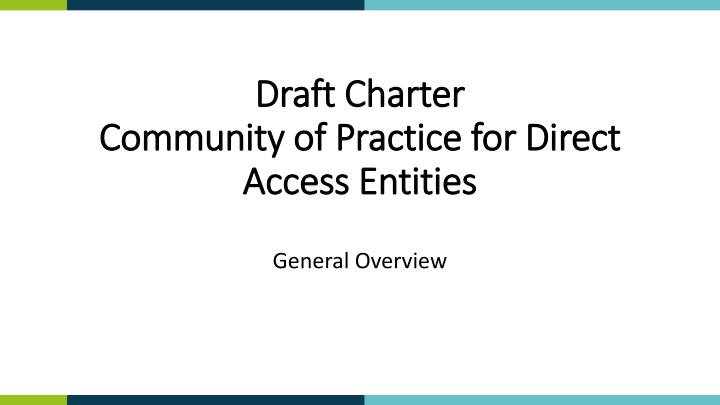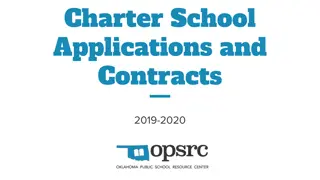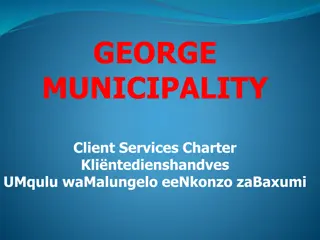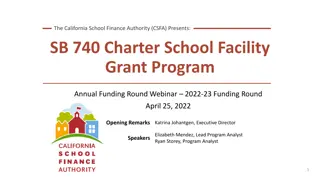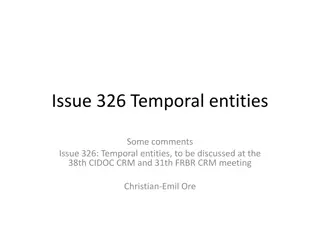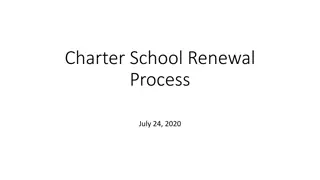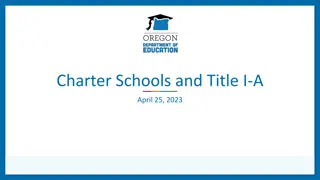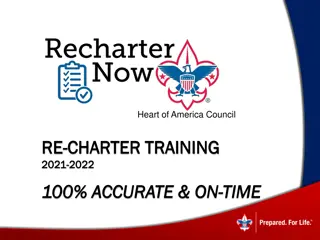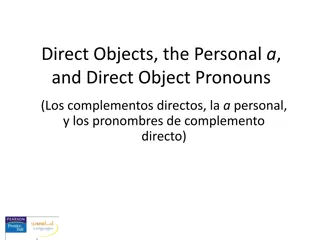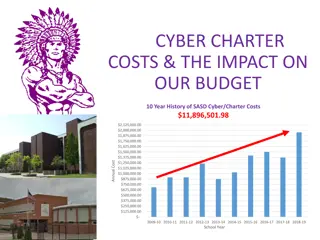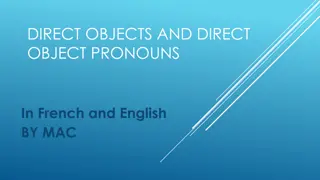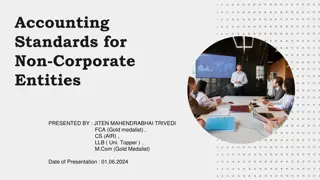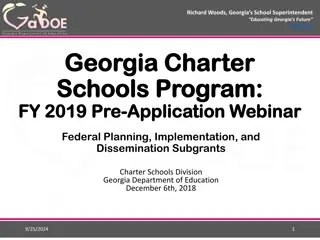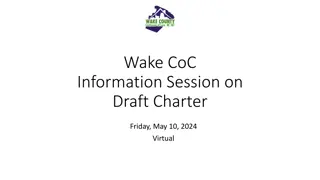Draft Charter Community of Practice for Direct Access Entities Overview
Living document providing guidelines for Direct Access Entities (DAEs) and community members to develop a successful community of practice. Purpose is to enhance knowledge exchange, collaboration, and effectiveness in accessing resources for climate change projects. Specific objectives include online platform development and capacity building. Ground rules emphasize participation, respect, integrity, and creating a trusting environment. Individual and organizational benefits include professional development, peer expertise, enhanced communication, and networking.
Download Presentation

Please find below an Image/Link to download the presentation.
The content on the website is provided AS IS for your information and personal use only. It may not be sold, licensed, or shared on other websites without obtaining consent from the author.If you encounter any issues during the download, it is possible that the publisher has removed the file from their server.
You are allowed to download the files provided on this website for personal or commercial use, subject to the condition that they are used lawfully. All files are the property of their respective owners.
The content on the website is provided AS IS for your information and personal use only. It may not be sold, licensed, or shared on other websites without obtaining consent from the author.
E N D
Presentation Transcript
Draft Charter Draft Charter Community of Practice for Direct Community of Practice for Direct Access Entities Access Entities General Overview
Living document Provides guidelines which Direct Access Entities (DAEs) and community members agree Draft Charter General Aspects ground rules, expectations and the purpose for the group s existence contains information and key points needed to develop a successful community of practice
Purpose Provide an avenue for knowledge exchange, learning and experience sharing, collaboration and peer support within the community of national implementing entities (NIEs) and DAEs involved in the programming of climate change adaptation and mitigation finance, so as to increase the effectiveness of entities in accessing resources and implementing adaptation and mitigation projects and programmes through direct access
Specific objectives Scope Development of an online platform for experience sharing; Accredited NIEs of the Adaptation Fund and DAEs of the Green Climate Fund (GCF) that are Development of a capacity building, with a focus on direct access (through accreditation), project development, and monitoring and evaluation of projects; eligible to access adaptation and mitigation finance directly from both the Funds. Support for bilateral cooperation between DAEs, or between DAEs and future accredited entities.
Ground Rules for Engagement Members will participate to the fullest extent possible Participation of members is voluntary Participation and collaboration are used to overcome challenges that are priorities in climate adaptation and mitigation funding modalities and project/programme implementation best practice; Members agree to be respectful Members will uphold a high level of integrity. Members are willing to openly share and be transparent. Challenges, lessons learned and successes are shared openly Members strive to create an environment of trust and to foster insightful, non-threatening discussion of ideas and experiences; Membership and topics reflect issues of interest and of relevance to NIEs/DAEs
INDIVIDUAL AND ORGANIZATIONAL BENEFITS Individual Organizational Continue to learn and develop professionally; Access expertise from peers; Increase communication with peers; Increase productivity and quality of work; Network to keep up to date with current trends, technology, innovations and best practice in adaptation and mitigation projects/programmes; Develop a sense of professional identity; Enhance professional reputation. Facilitating a cost effective avenue for retrieving information; Reducing the time and effort it takes to learn new content on specific relevant topics; Enhancing the provision of and access to South-South peer support for climate change adaptation and mitigation; Improving knowledge sharing and distribution; Enabling innovation; Building alliances; Enhancing access to the resources of climate funds.
Key Deliverables CPDAE launch message or circular; A signed Community of Practice Charter; An action plan (sustainability plan) with key deliverables Coordination and Communication Strategy; Contact details of community members; Online collaboration tool (e.g. a group email, a website that includes member profiles, discussion forum such as the World Bank C4Dev platform, resource library, calendar of events, etc.) Annual meetings; Discussion groups; Links to presentations by community members; Best practices and successful cases. Development of an online platform for experience sharing Capacity building and training of trainers programmes with training modules
Membership Entry of New Members All members of the community of practice are Accredited NIEs of the Adaptation Fund and encouraged to sign the member signature page DAEs of the Green Climate Fund of other climate in Annex I to this charter funds, Participation as a member on the online Signing of the charter by an NIE/DAE. platform for the community of practice will be New members may be admitted to the by invitation and exclusive to persons registered community through the invitation and/or with the NIEs/DAEs. referral of an existing community member or request by the non-member made in writing, to the CPDAE management committee.
Overseeing access and use of the online platform Structural Design Receiving and addressing requests for membership to the CPDAE and online platform for the CPDAE; Encouraging and promoting discussion on the CPDAE online platform; Planning and arranging face to face meetings of the CPDAE, e.g. on Committee the margins of other global climate change events/meetings; Suggest ideas for future specific activities by the CPDAE in consultation with members; Make announcements and provide information regarding the CPDAE operations, activities and management to members; Oversee review and amendment to the draft charter as necessary.
Stakeholder Responsible NIE/DAE members of community of practice or dedicated NIE/DAE subgroup, Approach Agreement Practice tools and management roles Output Outcome Enabling environment for a successful community of practice created Management roles identified on Community of collaboration, of Management support systems and tools created and identified Roles and responsibilities members agreed upon Online platform according to agreed collaboration areas of structured areas of Members practice of community of Open discussions describing the benefits, responsibilities, constraints and implementing a practice Socialization practice concept of community of Socialization/ functioning benefits of membership to NIEs/DAEs and external parties. a successfully showing risk, community challenges community to of Charter: created and socialized, take in feedback and educate members on charter and practice Collaboration online community of practice members First draft of community charter developed Identify changes needed to charter Communication tools chosen Revised version of charter signed by members community of set up roles, creating sub groups, facilitating discussions, encouraging knowledge sharing Site visits, in person knowledge sharing continued online support Community begin taking ownership of practice members Members practice of community of Community gathering or collaboration of practice specific Identifying expertise, good practices, creating knowledge products, tools or publications Identify opportunities and challenges Make adjustments Adaptation Secretariat, Members of COP Fund GCF Board Establish assessment effectiveness on a regular basis a framework of for the Measure community of practice output, ROI on Secretariat, the CPDAE
